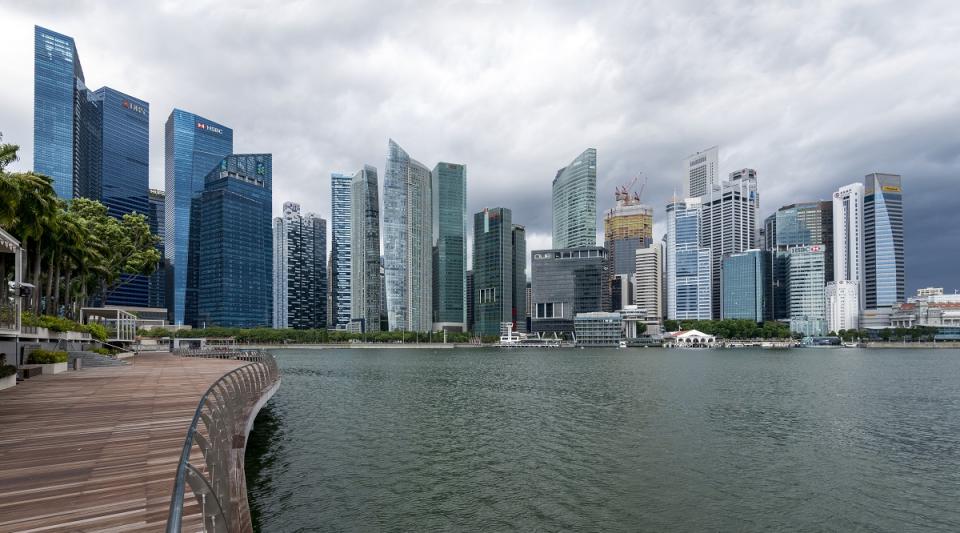RHB downgrades banks to 'neutral'; UOB named top pick

UOB is the only bank with a "buy" call after OCBC was downgraded to "neutral" on July 5.
The Singapore research team at RHB Bank Singapore has downgraded Singapore banks to “neutral” from “overweight” after a series of “disappointing macroeconomic data” recently. The disappointing data may have impacted business confidence and consumer sentiment, notes the team.
“This suggests that softness seen in credit demand and investment banking activities will likely extend into 2H2023,” it adds.
Loan growth is also expected to be sluggish with sector loans forecasted to grow by 3.7% y-o-y in FY2023 with downside risks to the team’s projections. “Sector loans, which were flattish in 1QFY2023, remained subdued in 2QFY2023,” it points out.
Furthermore, with Singapore’s growth engines, the manufacturing and financial services sectors, expected to remain low in the second half of FY2023, demand for credit will stay “tepid”, says the team. It adds that housing loans are holding up, helped by drawdowns.
“The drop in new bookings following recent cooling measures would only impact banks’ mortgage books about a year later,” notes the team.
Fee income for banks is also expected to remain weak with earlier hopes that figures would strengthen in the later part of 2023 are looking “increasingly tentative”.
“Although card fees have recovered on the rebound in travel post lockdown, wealth management and loan-related fee income are being affected by cautious investor sentiment and weak loan growth,” says the team.
“Still, banks could see a fast turnaround in fee income prospects, should capital markets awaken from their long-bear slumber. Singapore banks have been seeing strong inflows of net new money, but have not been able to deploy these funds due unfavourable market conditions,” it adds.
Despite the negatives, the team sees that the banks will see yet another year of strong net interest income (NII) growth, with an average growth of 22% in the FY2023 for all three banks.
“Most banks believe that net interest margins (NIMs) have peaked in 1QFY2023 due to deposit repricing. NIMs are expected to narrow sequentially in 3QFY2023 and 4QFY2023, but the slippage would be modest as the shift out of current account, savings account (CASA) to fixed deposits has slowed,” the team writes.
“A resumption in US rate hikes would, however, provide some reprieve. Still, banks’ NIM would average at higher levels in FY2023 vs FY2022, as much of the 500 basis points (bps) increase in US interest rates occurred in 2HFY2022,” it adds.
Asset qualities among all three banks are also stable with stress tests revealing “no discernible signs” of stress in their loan portfolios.
“The benign non-performing loans (NPLs) underpin banks’ belief that credit costs would normalise from FY2023, after the lower charges seen in FY2022,” says the team.
In the FY2023, the team expects the banks’ earnings to grow by 23% y-o-y followed by a “muted” FY2024 with a 1% growth y-o-y.
“Healthy NII growth of 22% and positive jaws from a moderation in operating expenses (opex) growth (9% versus +11% in FY2022) are key factors that would lift sector net profit by 22.6% y-o-y in FY2023,” the team says.
“However, NII would only rise by 1.4% in FY2024 as we expect NIM to narrow on higher cost of funds. Consequently, pre-impairment operating profit (PIOP) would rise a modest 1.8% while slightly higher effective tax rate should result in a mere 0.8% uptick in net profit,” it adds.
With shares in Singapore banks now standing 7% lower year-to-date (ytd), underperforming the broader market’s 4% decline over the same period, the sector is trading at a 1x 12-month forward P/BV, at the sector’s historical average.
“Against the consensus return on equity (ROE) of 12.7%, the sector’s valuation is undemanding, in our view,” says the team.
“That said, we believe investors would shy away from bank stocks in the immediate term,” it adds.
Among the banks, United Overseas Bank U11 (UOB) is the team’s top pick. It is also the only bank that still has its “buy” call after Oversea-Chinese Banking Corporation (OCBC) was downgraded to “neutral” on July 5.
“This also ties in with the slight shift in our framework for stock-picking towards banks with a smaller exposure to China. China’s slower-than-expected economic recovery and troubled property sector are other headwinds that worry investors, even though the banks remain comfortable with their China exposures,” says the team.
UOB has the smallest exposure to Greater China with 15% of its loans and 10% of pre-tax profit compared to DBS’s 30% of loans and 22.5% of pre-tax profits as well as OCBC O39’s 25% of loans and 19.5% of profits.
As at 4.04pm, shares in DBS, OCBC and UOB are trading at $30.77, $12.08 and $27.39 respectively.
See Also:
Click here to stay updated with the Latest Business & Investment News in Singapore
Broker’s Digest: OCBC, ComfortDelGro, LHN, UOL, Genting Singapore
RHB downgrades OCBC to 'neutral' with lower NIM, net profit forecast
ComfortDelGro's expansion into China sees RHB raise TP to $1.35
Get in-depth insights from our expert contributors, and dive into financial and economic trends

 Yahoo Finance
Yahoo Finance 